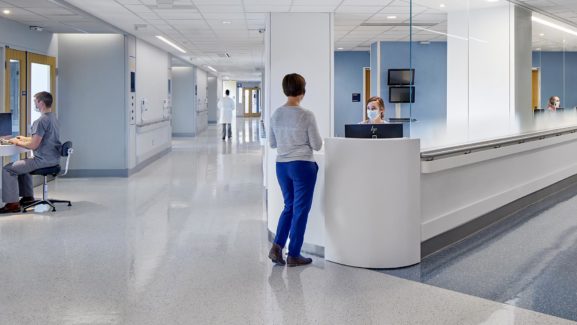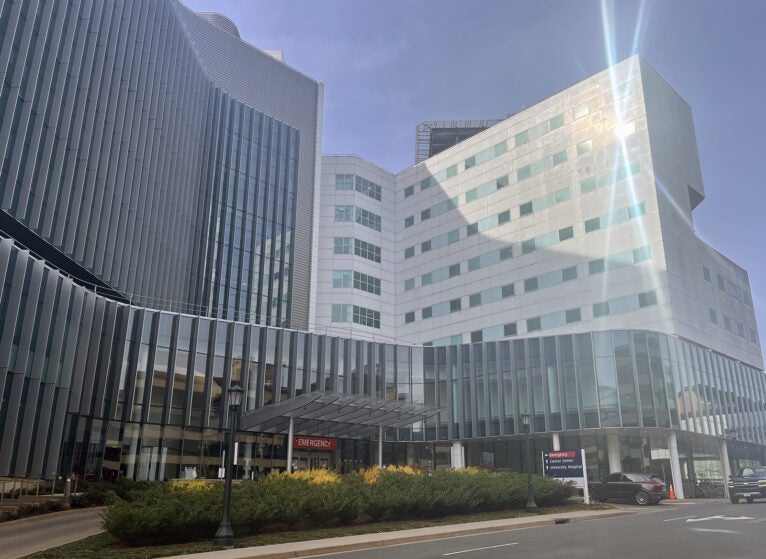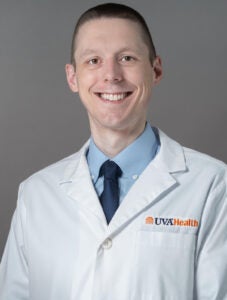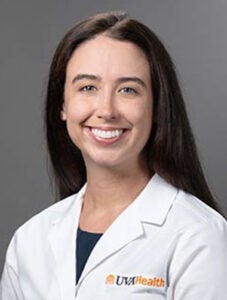

Inside UVA Health’s New Emergency Department Observation Unit
It's been almost a year since UVA Health University Medical Center opened a new 10-bed Emergency Department Observation Unit (EDOU) and named Brit Long, MD, as Medical Director.
Providing a bridge between emergency and inpatient care, the observation unit sits just outside the ED, but has larger rooms and a calmer environment.
Sarah Wendel, MD, MBA, Medical Director, Emergency Department, UVA Health University Medical Center, says the new unit represents more than just extra capacity.
“It’s really nice to have a place for patients to get the additional care they need before being discharged or admitted,” she explains. “A lot of times, we don’t have the opportunity to complete workups unless patients are admitted. This gives us that chance!”
In this Q&A, Dr. Wendel shares how EDOU is the result of a true collaboration across departments and how their teamwork is benefiting patients.
What's an ED Observation Unit?
ED observation units (EDOUs), sometimes called clinical decision units or CDUs, are pretty common across the country. They are utilized for patients who don’t need a full hospitalization, but who need more than just an ED visit to solve their problem or need an additional workup to make sure they’re safe to go home. Patients generally really like EDOUs because their workup is done in an expedited fashion. For example, with chest pain workups, we can get cardiac imaging, stress tests, an echocardiogram, and a consultation if necessary — all done within about 15 hours. That’s much shorter than a regular hospitalization, which can take a couple of days.
How is the unit different from a typical hospital stay?
Our job in the ED is to triage, acutely stabilize, and start treatment for patients. Sometimes they need an additional workup, and that’s where EDOU comes in. We finish their workup and either discharge them or admit them to the hospital if needed. In a high-functioning ED observation unit, about 15–25% of patients are ultimately admitted. So, it’s not that everyone gets discharged; it’s that we’re given more time to figure out the right course.
What kinds of cases are you seeing in the ED Observation Unit?
We see patients who come in with chest pain and other cardiac symptoms that require additional workup, and we also care for patients with stroke-like symptoms that have resolved but still need evaluation. Those patients are seen by our Neurology colleagues and set up with outpatient follow-up appointments. We also treat cellulitis and tissue infections with IV antibiotics, manage pain control for renal colic, and treat snake bites.
What outcomes have you seen so far?
There's strong patient safety data showing this model is safe, and patients are triaged appropriately. It also helps with hospital capacity. Patients who really need to be hospitalized get admitted, while others can be managed safely in observation. That’s huge when you think about bed capacity across the country. Creating this unit allows us to continue caring for patients who walk through our doors without having them wait in the lobby or leaving without being seen.
The literature shows EDOUs deliver many advantages: high quality patient outcomes (comparable or superior to inpatient treatment); better patient and physician satisfaction; and improved ED operations, inpatient hospital operational performance, and inpatient hospital financial performance.
What's been most critical to the success of EDOU?
Our Chair of Emergency Medicine, Andrew Muck, MD, MBA, was the driving force behind this unit when he came to UVA Health in 2023. One of his goals was to open observation units, and this has been a true collaborative effort ever since.
The Division of Cardiology has been an incredible partner on our chest pain and heart failure pathways and helped ensure we have prioritized resources — like echocardiogram technicians — which is no small feat given that no one has unlimited resources!
The Department of Neurology also has been an incredible partner by setting up our transient ischemic attack [TIA] pathway, which requires a lot of tests to be done very quickly — MRIs, echoes — to stay within national benchmarks.
Our Division of Toxicology has been engaged deeply in building out specialized pathways, like the snake bite pathway.
Internal Medicine has also played a critical role, since many of these patients would otherwise have been admitted there for cellulitis, pyelonephritis, or hyponatremia. Their expertise has helped us establish clear clinical benchmarks so we know which patients can go home safely — and which need admission.
What’s next for EDOU?
We have a lot going on! We’re continuing to collaborate across service lines — not just with Internal Medicine, Cardiology, and Neurology — but also with surgical subspecialties. None of these pathways is done in a vacuum. They only succeed because team members across departments have prioritized this patient population and brought forward expertise. That collaboration has been essential!
Latest News







